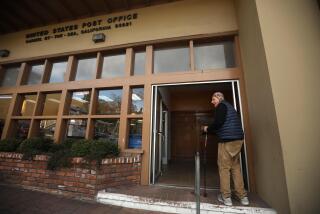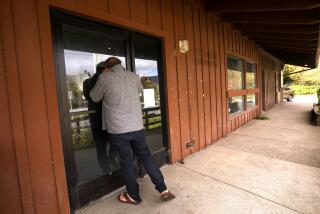- Share via
PEANUT, Calif. — The people who lived in the rugged Northern California mountain hamlet called Salt Creek wanted their very own U.S. post office.
It was the early 1900s, and getting the mail had become such a chore for this speck of a town deep in forest, about 100 miles south, as the crow flies, of the Oregon border. The journey to the nearest post office in Hayfork — a seven-mile horseback trail ride near the eponymous creek — could take several hours.
Besides, a bona fide post office would, quite literally, put the community on the map.
But Salt Creek’s application was rejected by the U.S. Postal Service, which asked for a single-word town name. An exasperated local school teacher explained the dilemma while visiting the postmaster in nearby Weaverville, who was snacking on a sack of goobers.
“The postmaster was gnawing on some peanuts, and he half-jokingly said, ‘Let’s name it Peanut,’” said Jim French, a board member for the Trinity County Historical Society.
The town got its post office, and thus was born Peanut, Calif.
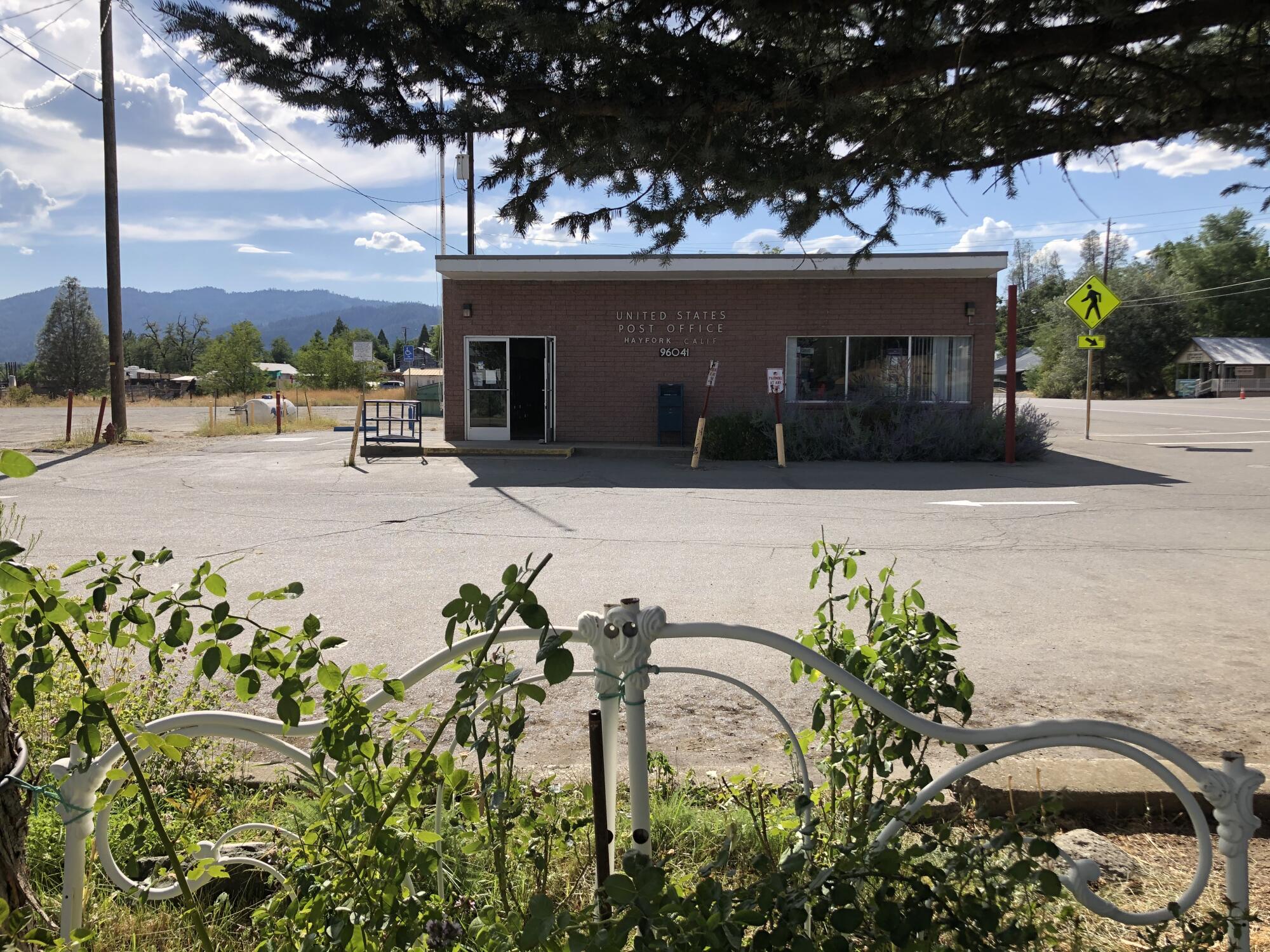
It’s a silly story, sure. And, like a lot of local lore, it changes a bit depending on who’s telling it. One thing is certain: a post office was involved.
And stories about the U.S. Postal Service aren’t very fun nowadays.
More likely, they involve people not getting their mail, including vital prescriptions, rent checks and even Holocaust reparations; the removal of blue collection boxes and sorting machines; dead animals and rotting food piling up in packages at mail facilities.
There are broad concerns about the integrity of mail-in voting in November. President Trump, who votes by mail in Florida, regularly and falsely claims that mail-in voting leads to rampant voter fraud.
Then there’s the story of the postmaster general du jour. It involves no salty snacks — but there’s enough saltiness, anger and concern to go around.
Louis DeJoy, a former logistics executive and prominent donor to Trump and other Republicans, was served a congressional subpoena for records about the mail delays and his appointment to the job in May. And California just joined several states in filing a preliminary injunction to immediately reverse the changes at the Postal Service while a related lawsuit moves forward.
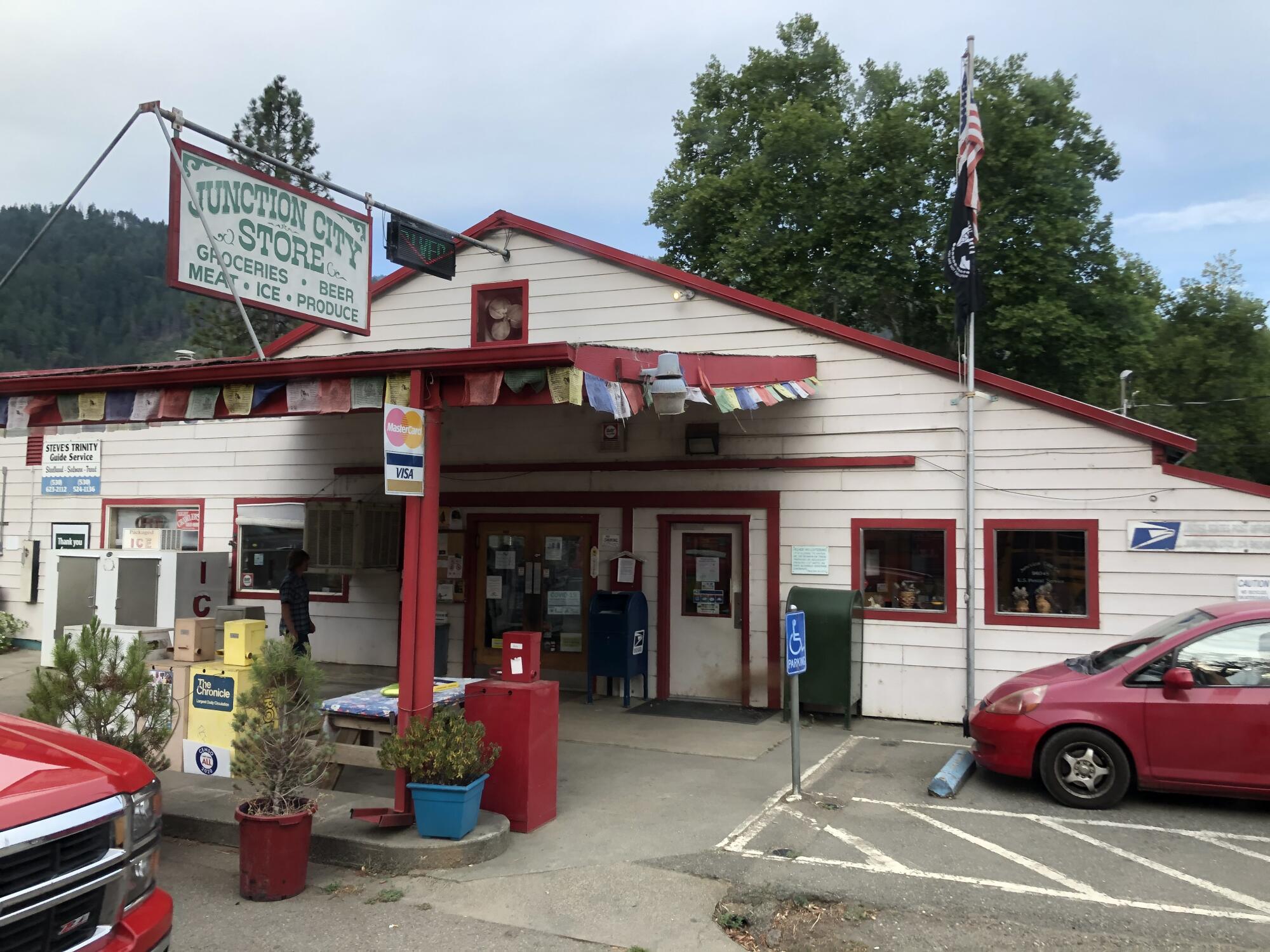
The postmaster of postmasters is having a moment. But for generations, local postmasters, and the now-besieged Postal Service, had many. They held a lot of sway — and respect — especially in rural places, like Peanut, that wanted to come up in the world.
“If your town had either a post office or a railroad station, then you were connected to the outside world,” said Daniel Piazza, chief curator at the Smithsonian’s National Postal Museum. “If you had both, you had really made it.”
Around the turn of the 20th century, the names of post offices were often adopted as town names.
“The post office, and the name of the post office, often precedes the incorporation of the town or village by many years,” Piazza said. “It was more important to have a post office than it was to have a mayor and a city council and a city charter.”
This was especially true before free, at-home mail delivery became the norm in rural America.
“If you ask someone in a very rural area, it’s devastating — devastating — when the post office goes away.”
— Daniel Piazza, chief curator at the Smithsonian’s National Postal Museum
Many assume it was telegraphs and the telephone that connected bygone rural communities to the rest of the world. But in places like Peanut, it was the post office. People could shop from the Sears Catalog or ship seeds or get letters from family members across the country.
The analogy today, Piazza said, is cellphone service and the internet. People assume it’s everywhere, but in many small towns, it’s still practically nonexistent.
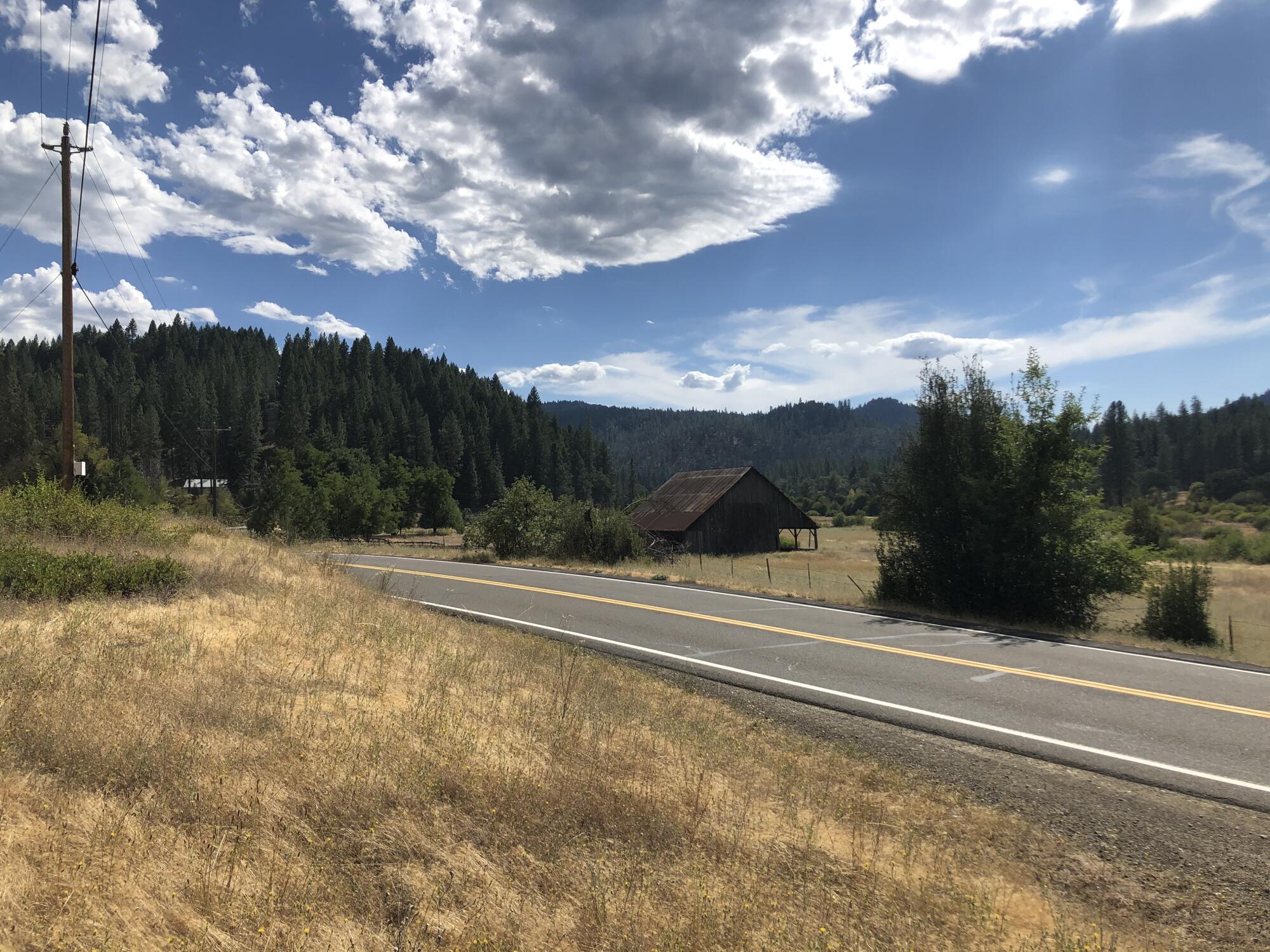
Piazza said he understands why the Postal Service has, for years, considered closing or consolidating rural post offices, which are expensive for the financially-strapped agency to run. But for those who don’t live in small towns, it’s hard to comprehend their importance, he said.
“If you ask someone in a very rural area, it’s devastating — devastating — when the post office goes away,” he said. “If you ask someone in an urban area with high-speed internet and Amazon Prime same-day delivery, maybe it’s not as important, except in the last five or six months where suddenly we’re all relying on social distancing.”
With the creation of so-called post roads, the Postal Service quite literally connected communities. For many years, it had a whole bureau dedicated to making maps to chart out mail routes and determine where to establish post offices, Piazza said.
From 1850 to 1890, the number of post offices more than tripled, from 18,417 to 62,401, according to the agency.
In 1890, the federal government created the U.S. Board on Geographic Names to standardize place names. The Postal Service became the most visible federal agency to carry out the new rules — like dropping the final “h” in names that ended in “burgh,” and changing “borough” to “boro.”
And, as in the case of little Peanut, née Salt Creek, avoiding names with two words. Suffice to say, the rules upset a lot of people.
“The folklore and legend of towns all over the U.S. is they blame their name on the post office,” Piazza said. “They say, ‘The post office didn’t like our name. They changed our name.’ It wasn’t really the post office; it was the Board on Geographic Names, but as an agency of the federal government, the post office was obligated to enact their order, and it was up to the locals to raise a stink and get their name changed.”
In Pie Town, N.M. — named after the vaunted apple pies sold at an early shop — legend has it that when the townsfolk applied for a post office in the 1920s, they initially faced opposition from the feds, who wanted something more conventional.
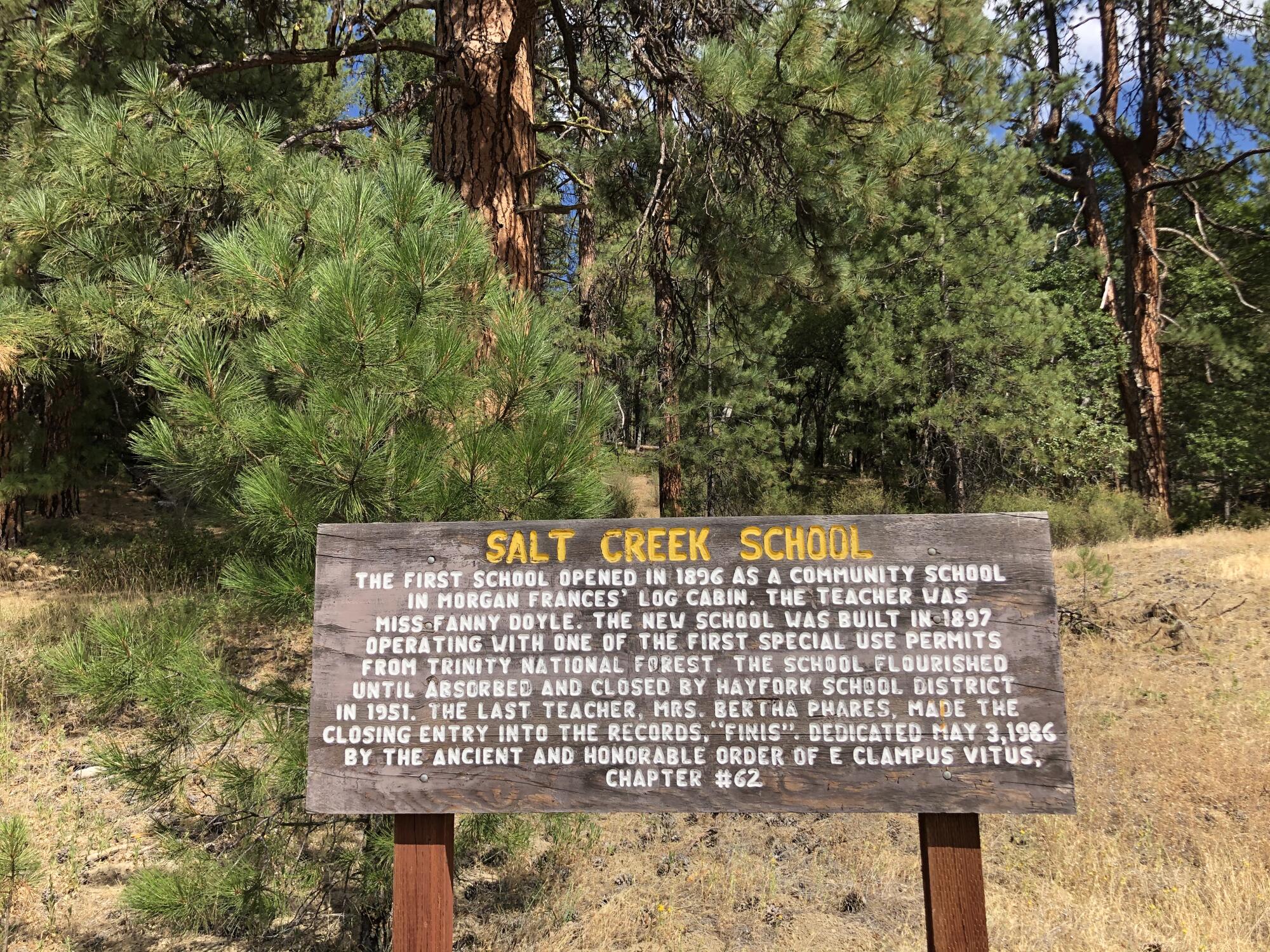
In Texas, one small town had six names rejected by the Postal Service in the late 1800s. The residents, according to the Texas State Historical Assn., wrote back: “Let the post office be nameless and be damned!” The town officially became Nameless, Texas.
In California, just across the county line from Peanut, the post office in Whiskeytown did not bear the community name for decades because the Postal Service wouldn’t allow it.
Many say it’s because “whiskey” was too risqué. But Jay Thompson, a curator at the Shasta Historical Society, pins the blame on a mundane federal directive to avoid “town” in a post office name.
“People jumped to the conclusion that it was because it was immoral,” Thompson said. “People embellish.”
The Whiskeytown post office burned in the 2018 Carr fire.
“It’s special. It feels like sacred ground.”
— Raymond Patton Jr., on Peanut, where he grew up
As for Peanut, one must look to A.L. Paulsen, the postmaster of Weaverville from 1898 to 1914. In his telling, a visiting Salt Creek teacher asked him to suggest a name for the new post office after theirs was rejected.
“I was enjoying a bag of peanuts and jokingly said: ‘PEANUT’ would be a good name, Joe,” Paulsen recalled in an article for the Trinity County Historical Society. “Seriously, Joe remarked: ‘They wouldn’t stand for that.’”
Paulsen searched the post office directory and found no other Peanut. So, they sent an application to Washington.
“I felt a twinge of regret ... but couldn’t help grinning, when I heard that the Postmaster General agreed with my ‘NUTTY’ choice,” Paulsen wrote. “For that moment of doubtful fun, I received a deserved call-down from a good citizen of Peanut.”
French said the Peanut post office opened on a family’s ranch in 1908 and became the town’s social hub. More than 100 people are said to have called Peanut home back then. There was a school, a general store, a hotel.
Peanut, or what’s left of it, is located in what is now the Shasta-Trinity National Forest, along a narrow stretch of State Highway 3. It is easy to miss, with no road signs declaring it even exists.
In a different version of the Peanut origin story, Ralph Patton, a rancher and lifelong Peanutter, told the Los Angeles Times in 1968 that his father was part of a committee of men who met at the turn of the century to give the place a name. With a postal directory in hand, they tried to find a name that was not already in use.
“Pecan, Chestnut, Walnut — hell. Even all the nuts were taken,” Patton said. “Except peanut.”
Ralph’s grandson, Raymond Patton Jr., grew up in Peanut. He said his Native American ancestors, of the Wintu tribe, had lived there since time immemorial, and his white ancestors have been there since the 1800s. Patton Jr.’s father still owns a ranch in Peanut.
Patton Jr., 48, said his great-great grandmother, Sarah Patton, was sitting near a campfire in the 1890s when a man known as Old Mule Man bragged that he was going to homestead a piece of land in Peanut. In the middle of the night, she got on her horse, rode 35 miles to the land office in Weaverville and filed a claim, beating him to it.
“It’s special,” Patton Jr. said of Peanut. “It feels like sacred ground.”
The post office was shut down in the early 1930s. Eventually, it burned to the ground. Once again, the nearest post office for Peanut’s handful of residents is in Hayfork.
French said there used to be at least 45 little post offices in vast Trinity County, which has 12,300 people spread across an area bigger than both the states of Rhode Island and Delaware.
There now are about a dozen post offices, he said, and it feels like “they’re trying like the dickens to shut those down.”
Today, the town of Peanut is mostly a memory. All that remain are a few barns and a wooden sign next to Highway 3 commemorating the long-gone Salt Creek School.
But there’s something else, a reminder of why communities have fought to get — and keep — their post offices. That reminder can still be found on maps: the name Peanut, California.
More to Read
Sign up for Essential California
The most important California stories and recommendations in your inbox every morning.
You may occasionally receive promotional content from the Los Angeles Times.

